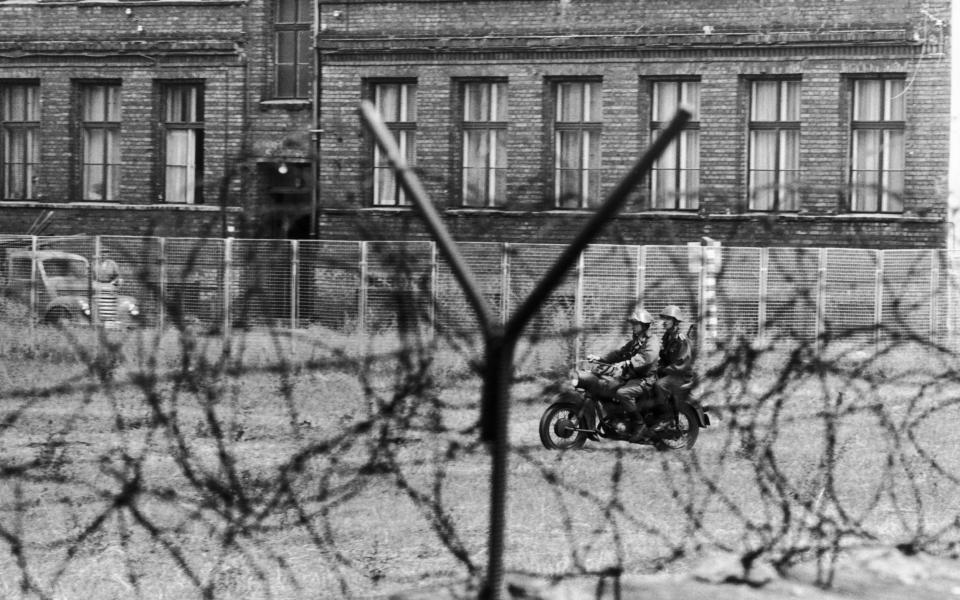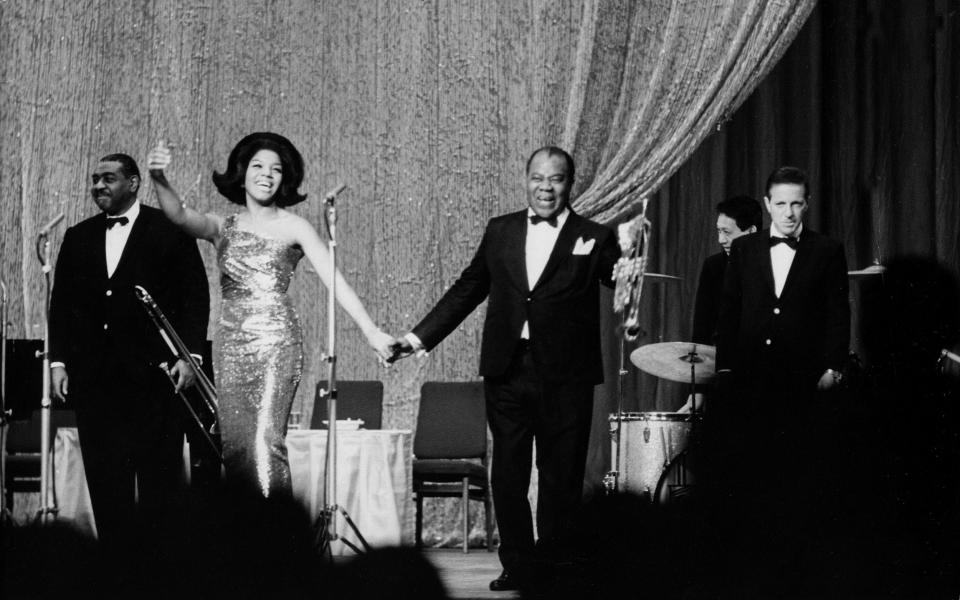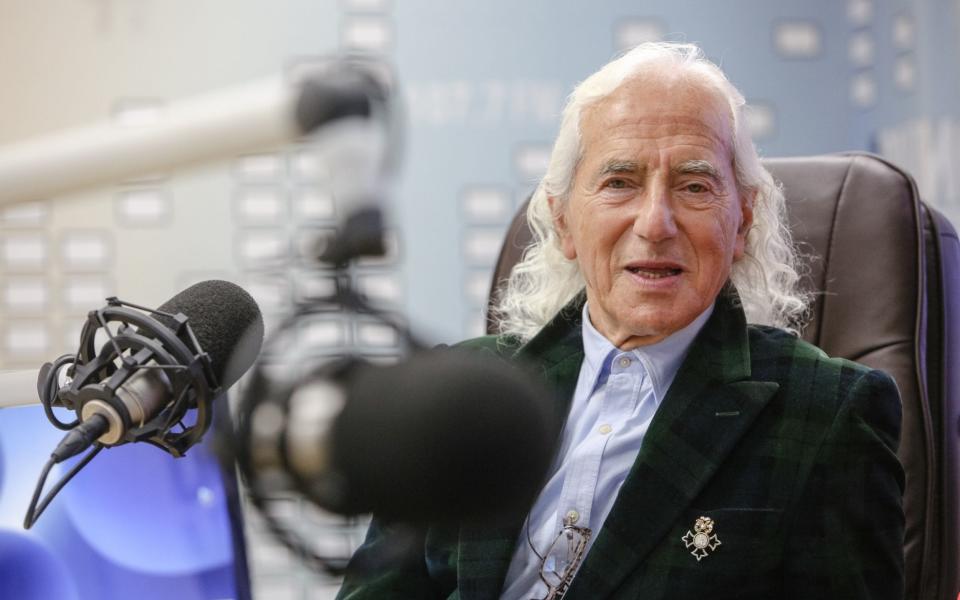The voices of America: how radio helped the West to defeat Communism in Europe

When the English-language radio station KCRW Berlin ceased broadcasting last month – another victim of the pandemic – it ended a 75-year history of American stations on the German airwaves. That lineage began with the Allied invasion of occupied Europe, and played out throughout the Cold War: a story of propaganda, youth revolution and rock ’n’ roll DJs.
KCRW Berlin had only appeared in 2017, an offshoot of the Californian station KCRW. But the first American station in Germany, AFN Munich, began broadcasting back in July 1945 – a chirpy, morale-boosting and decidedly Western voice that emerged from the ruins of the Second World War. (AFN stood for “American Forces Network”, of which it was a part.) In the post-war years, it was one of several “Cold War stations” that targeted a listenership behind the Iron Curtain. Others included Voice of America, Radio Free Europe, Radio Liberty, Radio in the American Sector, Deutsche Welle and even the World Service.
Western news, music and culture became a key weapon in the East-West battle of ideologies. Despite the gloom of nuclear paranoia, the upbeat styling of jazz and rock ’n’ roll hit more targets than missiles ever did. In the face of these stations, the Communist regimes responded with jamming, censorship and firing propaganda back. But it’s estimated that one-third of adults in Soviet cities and approximately half of those in Eastern Europe regularly listened to Western radio broadcasts.
And the Soviets were right to fear the influence of radio. “Western broadcasters told people truths that the Soviet regime hid from them,” wrote Dr Kristin Roth-Ey, a lecturer in Russian history lecturer at UCL, last year. “People listened because they were hungry for those truths, and truth-telling ultimately eroded faith in the Soviet system.”
Today, the American Forces Network broadcasts radio and television around the world. It began transmitting in London on July 4 1943, intended for homesick GIs stationed in Britain. Most of its content was provided by the Armed Forces Radio Service. Early hit shows included Command Performance, an A-list variety request show, for which servicemen could request appearances from dutiful, patriotic A-listers and suggest ideas for music or sketches. Bing Crosby, Bob Hope, Frank Sinatra, Ginger Rogers, Gary Cooper, Louis Armstrong, Lana Turner and Judy Garland were among the stars that appeared.

After the Allied invasion of Europe, AFN followed the troops on the march toward Berlin, and broadcast from mobile vans on the frontline. Its stated purpose was “To bring Yank radio to Yanks in Europe”, though it was a hit with British and French listeners too. The first German station, AFN Munich, was set up in a radio-equipped house that had belonged to a Nazi official. But the station began with an almighty clanger from Station Commander, Maj Bob Light. “Good morning, this is AFN Munich, the Voice of the Seventh Army,” Light declared, unaware that Gen George S Patton’s Third Army had taken control of Munich the night before. As the story goes, Patton was so incensed upon hearing the blunder that he cut himself shaving and ordered that the announcer be court-martialled.
After Germany’s surrender, its native radio stations were shut down and re-organised to help communicate information, manage resources and “de-Nazify” the country. But by the end of 1945, the German stations were operational again, now under the supervision of US Army Psychological Warfare personnel. Meanwhile, the AFN had set up seven stations in the country for occupying US troops – Munich, Stuttgart, Frankfurt, Bayreuth, Bremen, Bremerhaven and Berlin – but also gained a significant audience of German “shadow” listeners.
Capt Bob Harlan, who had a 36-year career with AFN from 1949 on, described how their stations bolstered relations between Germans and the American occupying forces. “AFN was truly an ambassador of goodwill in furthering a good, solid US-German friendship,” he said, as recalled in Patrick Morley’s book, This is the American Forces Network. “We gave them a picture of a world they were not getting through their own radio.” One German listener, also quoted by Morley, agreed: “We had been so used to the Nazi announcers barking out words as if they were commands, whereas AFN chatted to us as if we were close friends.”
AFN stations played a crucial role in the emerging Cold War. Since Berlin, while divided between the four powers, was wholly within the Soviet sector of occupied Germany, the Soviet forces were able in 1948 to block the Western Allies’ routes to the city. This lasted for 11 months, and forced Allied aircrews to drop supplies into Berlin, during which AFN Berlin helped pilots to maneuver their planes and maintain their morale, and reassured Berliners that the Western Allies wouldn’t abandon them.

Steve Craig, a retired academic from the University of Texas, has detailed how AFN quickly gained a reputation among its propaganda-wary shadow audience for providing straight-up, trustworthy news. AFN Munich was especially regarded for its reporting on the Nuremberg Trials, from 1945 to 1946. In truth, however, AFN was just subtler at propagandising than the more obviously politically-charged US stations. Voice of America – the US government’s official global broadcaster – first broadcast in February 1942, as an offshoot of the Office of War Information. It outlined its intentions from the get-go: “The news may be good. The news may be bad. But we shall tell you the truth.”
As recalled in Morley’s book, VOA took an “aggressive hard-line approach” in informing listeners about American life and policy – a tough means of combating Communist stations. The US further penetrated the Iron Curtain with the launch of Radio Free Europe (RFE) and Radio Liberty (RL) – not “official” government stations, but covertly funded and supervised by the CIA. Based in Munich, Radio Free Europe started on July 4 1950, targeting Soviet satellite states and broadcasting in multiple languages.
Stalin responded by personally requesting that RFE be jammed. Soon, Soviet radios were being produced without the capability to receive shortwave signals – a problem easily fixed with black-market components and basic technical know-how. Radio Liberty, meanwhile, launched on March 1 1953; it was directed into the heart of the USSR. (It had originally been called Radio Liberation – but that name sounded too incendiary.)
As described by Arch Puddington in his book Broadcasting Freedom, neither RFE nor RL was designed to promote an American way of life; they were intended to act as surrogate “home” stations, alternatives to Party-controlled Soviet media. Ultimately, they were a means of breaking down the Communist system, and the stations eventually merged in 1976. RFE/RL still exists today, broadcasting to 23 countries in 27 languages.

It wasn’t just news that the US used against its Cold War enemies. In the Cold War, even music became a cultural weapon – a way of targeting younger people behind the Iron Curtain. While artists waived their rights to residuals from songs played on AFN, providing free content and entertainment for the troops, the stations introduced and promoted American music in postwar Europe.
Jazz became especially popular with Soviets and Eastern Europeans, thanks to Voice of America. The station launched a short-lived show called Jazz Club USA in 1952, hosted by English jazz player and critic Leonard Feather, followed by the immensely popular Music USA in 1955, with American host Willis Conover. Puddington describes how jazz was effectively banned by the Soviets, where the authorities called it “the music of putrescent capitalism” and “sexual perversion in sound”.
And yet it was a hit. Radio Liberty launched a Russian-language jazz show, This is Jazz, in the early Sixties. The success inspired the US State Department to book top jazz stars on global tours. (Handily, this also served as part of a public-relations initiative following the Civil Rights unrest.) Among the “jazz diplomats” was Dizzy Gillespie, who played in the Middle East, Pakistan, Syria, Turkey and Greece. In 1957, Louis Armstrong (a self-professed “ambassador”) cancelled a trip to the Soviet Union in protest over a school-segregation controversy in Little Rock, Arkansas; nevertheless, eight years later, he did play in the Soviet Bloc – this time for a tour that wasn’t sponsored by the State Department.
“Louis Armstrong made more friends for [America] than any politician or diplomat,” said his bassist Arvell Shaw in 2001. “That’s why they named him ‘Ambassador Satch’. We were the first band to go behind the Iron Curtain. We played East Berlin – we played a week there.”
Shaw recalled how Armstrong was bored of being in the doldrums of East Berlin, so decided to go to West Berlin (“’Cuz West Berlin was swinging”). Despite being told that he couldn’t skip between East and West without papers, Armstrong took to a bus to the checkpoint anyway. Armed guards surrounded the bus, but one of them recognised him. They piled onto the bus for autographs and permitted Armstrong to pass into West Germany. Shaw recalled the US Ambassador saying to Armstrong: “How in the hell did you do that? I can’t do that!”

Like jazz, rock ’n’ roll was forbidden on radio stations throughout the Soviet Bloc. But in 1958, the Hungarian version of RFE, which broadcast from Munich, launched a show called Teenager Party, hosted by a Hungarian national named Géza Ekecs (broadcasting under the pseudonym Laszlo Cseke – “Uncle Laci” – to protect his family back in Budapest).
Prior to that, Ekecs had been a political journalist, and had no real interest in rock ’n’ roll music. But he became an iconic voice that spoke to a new generation. As Puddington wrote in Broadcasting Freedom:
For Eastern Europe’s younger generation, rock music’s anarchistic rhythms and message of individualism and personal freedom signaled a rejection of the entire fabric of state socialism, with its stodginess, its censorship and prohibitions, its limits on travel, its bogus proletarian culture, its elevation of political reliability over merit and imagination.
Teenager Party was free from obvious political leanings, though authorities were alarmed by its scheduling between two overtly political broadcasts. RFE put out a publication in 1968, Teenager Party: The RFE Program Which Has Captured the Hungarian Youth, which included some of the official attacks on the show. One of these suggested that Lyndon B Johnson, who was a senator for Texas when Teenager Party started and became US president in 1963, was behind the show.
Ekecs used a Top 40 format and furnished his excited listeners with facts on musicians and musical styles, which he memorised from magazines. He took requests but told listeners to use code names because authorities monitored Ekecs’ fan mail. He also interviewed a series of Western stars, including Elvis Presley, The Beatles, Duke Ellington, Louis Armstrong, Pink Floyd and The Doors. Speaking to American Routes in 2017, Hungarian diplomat Andras Simonyi recalled how he would go with groups of 20 or 30 teenagers into the hills of Budapest, where the jamming didn’t work, to secretly listen to RFE’s rock ’n’ roll programmes. For Simonyi, rock ’n’ roll played a role in the liberation of Hungary and Eastern Europe: “It was one of the most powerful tools to loosen the minds of people and loosen up the system.”

Another influence on Soviet youth came from the World Service, thanks to the Russian DJ Seva Novgorodsev, who began broadcasting in June 1977. The BBC estimated that by the Eighties there were 25 million people tuning in to hear his show, Rok-posevy. The Soviets jammed the station, as usual, but listeners could still find it, particularly in rural areas. (Jamming was abandoned in 1987; that year, Novgorodsev launched a chat show.) In a 2015 feature looking back on his career, the BBC reported that fan letters to Novgorodsev were “practically oozing with the glue the KGB had used to fasten them down again after they’d been steamed open.”
Novgorodsev discovered, many years later, that at least one fan had been jailed by the Soviet authorities for writing to him. The same officials had also told TV producers to schedule major shows to clash with the DJ’s broadcasts, while state newspapers ran hit-pieces about him. Novgorodsev collected those clipping in files which he labelled “Personal Fame”, and he was correct: when he returned to Russia in 1990, he was met with adoring fans at the airport. He outlasted the Soviet Union, broadcasting his BBC show until 2015.
KCRW might have been a relatively minor footnote in the story of American radio in Europe, but it’s also the last word in a tradition that helped shape the political and cultural landscape. As Arch Puddington, writing about the golden era and influence of Radio Free Europe and Radio Liberty, said: “In the war of ideas between communism and democracy – and this was, after all, the central conflict of the Cold War – the Freedom radios proved to be one of democracy’s most powerful weapons.”


